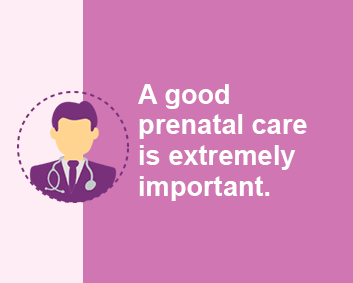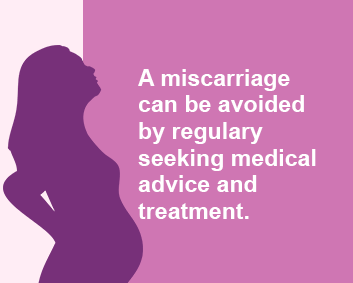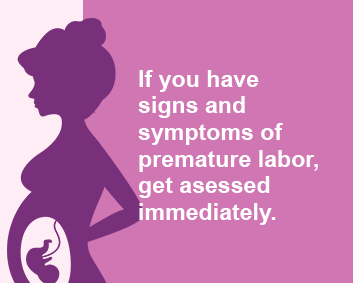
Here are some of the essential examinations done during pre-natal check-ups:
Urine analysis. Doctors check the urine for any sign of infection. They ensure that the urinary tract is sterile. Urinary tract infection is common in pregnancy and may come without symptoms. Both the mother and the newborn are at risk of complicated infections if left untreated.
Complete Blood Count. Hemoglobin level is determined to check for anemia. The developing baby is at risk of not gaining enough weight if the mother has untreated anemia.
Blood sugar tests. High blood sugar levels detected during pregnancy is either gestational diabetes mellitus (GDM) or diabetes mellitus in pregnancy. GDM, if untreated, posts a risk for preterm birth or delivering newborn that is too large for its age.
Weight Monitoring. Doctors monitor the mother’s weight gain during pregnancy. For women with normal weight prior to pregnancy, weight gain should be 25-35 lbs. If underweight, 28 to 40 lbs. If overweight, 15 to 25 lbs. If obese at least 15 lbs. Ask your doctor about your body mass index to find out your weight category. Weight monitoring impacts the dietary recommendations during pregnancy.
Blood Pressure is routinely monitored. BP during pregnancy is usually lower compared to pre-pregnancy BP. Hypertension disorders during pregnancy if untreated can cause severe illness for both mother and the baby. Pre-eclampsia and eclampsia are pregnancy disorders that present with high BP, spillage of proteins in the urine, swelling of hands, feet and face.

Vaginal bleeding during pregnancy requires immediate attention, medical evaluation and care.
Vaginal bleeding can occur early that is during the first 22 weeks of pregnancy. Bleeding during this period may be due to the following conditions:
Miscarriage. The pregnant woman may experience cramping, lower abdominal pain or backache and bleeding. The obstetrician will check if the cervix is open or closed to determine if the miscarriage is threatened, completed or inevitable. Bleeding is considered heavy if it takes less than five minutes for a clean pad or cloth to be soaked and/or large blood clots are coming out.
Ectopic pregnancy. The pregnant woman may experience light bleeding and abdominal pain. On examination by the doctor, the cervix is closed and a painful mass is found at the side of the uterus. In ectopic pregnancy, the fertilized egg is implanted and develops outside the uterus, mainly the Fallopian tube. The tube cannot accommodate an enlarging embryo and bleeding will take place.
Vaginal bleeding can occur in later pregnancy and labor. Later means after 22 weeks of pregnancy or in labor before giving birth. Bleeding during this period may be due to the following conditions:
Abruptio placenta. The pregnant woman during this period may experience bleeding, intermittent or constant pain. On examination, the uterus is tender and there are signs of distress in the fetus. During this emergency obstetrical condition, the placenta detaches from the uterus prematurely or not in the proper time. Rapid evaluation is a must.
Placenta previa. In this condition, the growing placenta is near or at the cervix or may cover all the opening to the cervix. Bleeding may be precipitated by sexual intercourse. The location of the placenta may be determined by a reliable ultrasound examination during pre-natal check-up. If undiagnosed, there is a risk of excessive blood loss.
There are other causes of bleeding in pregnancy. The key in preventing complications is regular pre-natal check-up and following doctor’s recommendations.
Before labor has begun, the woman experienced watery vaginal discharge after 22 weeks of pregnancy. This is the gush of amniotic fluid after the membrane has ruptured. PROM can happen before 37 weeks when the fetus is still immature or preterm or when the fetus is mature or term. PROM carries a risk if infection for both the mother and the baby.
It is important to know the age of the developing fetus. This can be done by doing ultrasound scan in early pregnancy. This will provide guidance and care to women who potentially may experience PROM.

Birth before 37 weeks of pregnancy is preterm birth.
In preterm labor, the woman experiences abdominal pain due to contractions, blood-stained mucus discharge called “show” or watery discharge by 37 weeks. On examination by the doctor, the cervix has already started opening at this time. It can pose adverse effects to the infant’s survival and quality of life.
Doctors may decide to prevent the labor to progress and work to improve outcome of preterm infants when preterm birth is inevitable.

Managing an existing health condition or discovering you have a complication in your pregnancy can be a very stressful time. You will of course be anxious about the well-being of your child.
Remember that your clinician will likely have treated women with similar problems and that most women will go on to have a successful pregnancy and a healthy baby when managed properly.
You may find that your partner is also anxious and it is important to make sure that you are both well informed. Know all the facts about your condition and understand how it can be successfully treated.
Tips and advice
Write down any questions you or your partner may have about your condition and take them to your next doctor’s appointment.
Ask your doctor about reputable websites online where you can get more accurate information.
Talk to your partner, a trusted family member, or friend. Communication is important and it helps to discuss your concerns and gain support from each other.